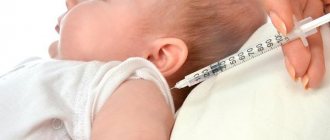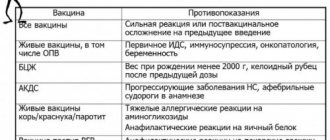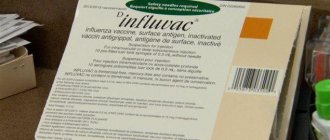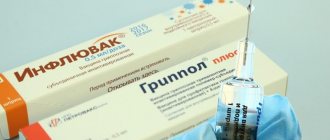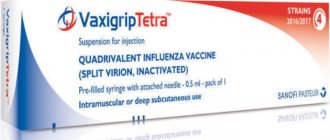Photo: Gustavo Fring/Pexels In Russia, like in most countries of the northern hemisphere, a flu vaccination campaign has been launched.
This year it is unprecedented in its activity due to the COVID-19 epidemic. Of course, no one assumes a protective effect of the influenza vaccine against the SARS-CoV-2 virus; the logic here is completely different.
Vaccination should reduce the incidence of influenza and severe complications from it (such as pneumonia). This, in turn, will reduce the number of hospitalizations, and therefore reduce the burden on hospitals, which are so needed for severe patients with Covid.
And finally, the situation where a patient is infected with both the influenza virus and SARS-CoV-2, although it seems unlikely, is not completely excluded, as evidenced by a report on such a case in China.
The arguments sound quite convincing, but there are some considerations that make us think about the balance of desirable and not entirely desirable consequences of influenza vaccination.
Let's start with the one that has been written about more than once.
The effectiveness of the influenza vaccine leaves much to be desired
There are many studies on influenza vaccines, and it is extremely rare that this figure reaches the 60% level, and most often it is much lower.
Annual meta-analyses of the independent Cochrane expert group (considered the standard of evidence) consistently demonstrate that for an adult the chance of receiving protection as a result of vaccination is 1:71, for a child - from 1:5 to 1:7, for the elderly (65+) - 1:30.
There are, perhaps, no greater supporters and advocates of vaccination against all infectious diseases than the experts at the US Centers for Disease Control (CDC). But despite the fact that the CDC actively promotes vaccinations on the eve of each season, on its website it provides numbers that do not inspire optimism.
In fact, the effectiveness of vaccination in the United States ranged from 10% in the 2004–2005 season to 60% in 2010–2011. In the 2016–2017 season it reached 40%, in 2018–2019 – 29% on average and only 9% from influenza type A (H3N2). For last season, the final results have not been summed up, preliminary results range from 31 to 44%.
Since we will still have to meet the 40% figure, let's find out what they really mean.
Meta-analyses show that during the flu season, 2.7 out of 100 unvaccinated adults get sick, which means your risk of getting the flu is 2.7% without immunization. (It may be higher if you suffer from a chronic disease or for some other reason your immune system is weakened).
By getting vaccinated, you reduce this risk by 40% of the base rate, that is, it becomes 1.62%. This roughly corresponds to the 1:71 ratio calculated by the Cochrane group.
Does the vaccine reduce severe flu cases, deaths and hospitalizations? Unfortunately, the results of meta-analyses provide negative answers to all three questions.
At the same time, scientists who deeply study the characteristics of the influenza virus and vaccination against it constantly discover new, sometimes discouraging data, which we consider it necessary to introduce you to.
Is the coronavirus vaccine safe for older people?
According to the chief physician of the hospital in Kommunarka, Denis Protsenko, vaccination against coronavirus will help reduce mortality among elderly patients with confirmed COVID-19. The level of antibodies in older people after vaccination against coronavirus is usually lower than in young people, said Deputy Head of Rospotrebnadzor Tatyana Nepomnyashchikh. “If the antibody level is zero, something must have gone wrong. Maybe the person had health problems or was simply overworked at the time of vaccination. Or he has an acquired or permanent immunodeficiency. “In older people, the immune response takes longer to form than in young people, and their antibody levels tend to be lower,” she noted.
Insignia: how authorities attract citizens to vaccination
Vaccination for elderly patients will be safe if the patients do not have exacerbations of chronic diseases, they have not had ARVI for two weeks before vaccination and have not received other vaccinations for 30 days, said Andrei Tyazhelnikov, chief freelance specialist in primary health care for adults. “I would like to say that the oldest Muscovite vaccinated against coronavirus is 104 years old <...> In total, more than 700,000 people in Moscow have been vaccinated against coronavirus, of which 50% are over 60 years old,” he noted. The expert recalls that citizens over 60 years of age are in the highest risk group and are more susceptible to coronavirus. “In fact, vaccination is the only way to protect older patients <...> We must intensify the vaccination process more than ever,” he added.
Advertising on Forbes
In some situations, the influenza vaccine is counterproductive

Russia, Moscow region. Photo: Sergey Savostyanov/TASS In 2009, the World Health Organization declared a swine flu (H1N1) pandemic, and although, as it turned out later, the danger was greatly exaggerated, many residents of Europe, North America and a number of other countries were urgently vaccinated against it. Another, also significant part of the population of these countries was vaccinated somewhat earlier against a different strain expected this season.
Analyzing incidence data in Canada, epidemiologist Danuta Skvoronski found that vaccination against seasonal flu increased the risk of contracting swine flu.
Dr. Skvoronski herself doubted that the results were not accidental, and conducted 5 more (!) studies that unexpectedly confirmed their accuracy.
When she shared her finding with colleagues whom she trusted, they tried their best to dissuade her from publishing, believing that the new data would “give grist to the mill of anti-vaxxers.”
However, Skvoronski decided in favor of scientific truth over corporate endorsement. “I felt that I had no right not to publish the results, since they were extremely important,” the researcher tells the New York Times journalist.
By the way, statistical analysis of human data found unexpected confirmation in animal experiments conducted by Skvoronski herself, as well as by American researcher Ami Vincent. Ferrets (in the first case) and piglets (in the second) also showed an increased risk of contracting swine flu when vaccinated against a different strain, and also suffered more severe disease.
While conducting careful analysis of seasonal data every year, Skvoronski encountered a startling phenomenon. In the 2014-2015 season, the effectiveness of the influenza vaccine against the H3N2 virus was... negative. Its value turned out to be -17%, which means that vaccination increased the risk of getting the flu by 17%.
Moreover, when Danuta Skvoronski and her colleagues compared the figures with data from previous vaccinations, they found that for those who were also vaccinated against influenza a year earlier (in the 2013-2014 season), the risk of getting sick increased to 32%, and for those who have been vaccinated annually since the 2012–2013 season – up to 54%!
Scientists have suggested that the record vaccine counterproductivity in the 2014-2015 season was a consequence of complex host-pathogen interactions, genomic variations of the virus, and the unexplained effect of annual vaccination.
Such counterproductivity was not found in subsequent seasons, but the fact remains: the influenza virus refuses to behave in a predictable way, and therefore the consequences of vaccination, unfortunately, also cannot be predicted with high accuracy.
And here the question arises in full force:
Is the effect of the flu vaccine on COVID-19 infection predictable?
It usually takes several months, sometimes more than a year, between researchers submitting their paper to a scientific medical journal and its publication.
It was purely coincidental that in January 2021, at the very beginning of the novel coronavirus pandemic, an article by Dr. Greg Wolff appeared on the effect of the flu shot on the risk of infection with other respiratory viruses.
In fact, Wolff's research itself was inspired by earlier work. A small placebo-controlled study by Hong Kong researchers in 2012, led by Dr. Benjamin Cowling, found that among 115 school-aged children, those vaccinated against influenza had a higher risk of contracting other respiratory infections: rhinoviruses, echoviruses, coxsackievirus and coronavirus 229E.
A neatly designed study, but small and with a homogeneous cohort (children only). How significant its results are is to be verified.
Wolff's group analyzed a fairly large array of data, however, also on a homogeneous cohort - military personnel of the American armed forces.
The researchers found that the flu shot, on the contrary, reduced the risk of getting a cold, but with two exceptions. The likelihood of infection with seasonal coronaviruses after flu vaccination increased by 36%, and the risk of infection with metapneumovirus also increased.
The study was criticized by many scientists, pointing out that the sample was unrepresentative. In addition, critics noted that the SARS-CoV-2 virus is significantly different from its low-risk predecessors, which means that data on the effect of the influenza vaccine on them cannot be extended to the new coronavirus.
But the main blow to the research was dealt not by anyone, but by Danuta Skvoronski!
First of all, she found a serious error in Wolff's statistical calculations.
Skvoronski herself uses the same method in her work as Wolff, and after analyzing his data independently, she did not find an increase in the risk of contracting coronavirus after a flu vaccination. Help The researchers used a so-called test-negative design.
Those who like to study scientific medical instruments can read about it here. In addition, Dr. Skvoronski further verified Wolff's findings using information collected by the Canadian Sentinel Practitioner Surveillance Network from seven previous influenza seasons. A group of researchers led by her found that flu vaccination reduced the risk of acute respiratory viral infections by 40%, including those caused by coronaviruses.
What makes Dr. Skvoronski's work more valuable is that she has repeatedly risked her reputation by publishing less-than-encouraging data on the influenza vaccine that has become, as another researcher puts it, the "sacred cow" of the medical world.
At the same time, her findings are unlikely to apply to the COVID-19 disease for the same reason that critics of Wolff's findings applied to the new coronavirus have pointed out.
Is it possible to infect others with Covid after vaccination?

As the world slowly begins to vaccinate people against coronavirus, one can increasingly hear another panicky argument about why nothing will work. It sounds very plausible: the vaccine does not protect against infection, it only protects against severe disease, which means that those vaccinated will catch the virus and spread it. Will the epidemic never end? This question was answered by molecular biologist, science journalist, author of the book about coronavirus “The Virus that Broke the Planet” Irina Yakutenko.
Various people have said a lot about the fact that the anti-Covid vaccine may not protect against infection. However, the key word here is “may”. Based on the results of the third phase of testing of all leading vaccines, we do not yet have data that would clearly indicate that the vaccine effectively prevents - or, conversely, does not prevent - mass infection and asymptomatic carriage.
We have the most information on the Pfizer/BioNTech vaccine, so let's take a look at them. An article in NEJM, which presents data on the safety and effectiveness of the vaccine, said that of the 36,523 participants who received both doses of the vaccine or placebo, symptomatic Covid occurred in 8 people in the vaccine group and 162 people in the placebo group. In other words, the risk of getting sick in the vaccine group is 95% less than in the placebo group.
This is a significant difference, which tells us that antibodies and T-cells - machines for killing infected cells - in the body of vaccinated people effectively recognize the virus and destroy it before it multiplies so much that the body becomes ill. And he feels bad both because the virus itself kills so many different cells, and because the immune system, having detected a huge number of viral particles, gets excited and triggers a systemic response, with all its unpleasant manifestations such as fever, chills and general ill health. well-being. All this usually happens when the coronavirus begins to slowly descend from the upper respiratory tract to the lower.
At the same time, the virus jumps to other people not from the lower respiratory tract, but from the upper - in fact, thanks to this feature, SARS-CoV-2 is much more contagious than its much more deadly relative SARS, the SARS virus.
Does the vaccine protect against Covid?
The most interesting events from the point of view of the spread of infection occur in the upper respiratory tract - the nasopharynx and oropharynx - in the first days after infection. If the virus manages to multiply strongly there, the person who catches it will be contagious; if not, it will not be or will not be very contagious.
A vaccine is not a talisman or a force field; it does not create an invisible shell around the vaccinated person through which flying viruses cannot penetrate. Viral particles, for example, flying out of the mouth of an infected interlocutor, who do not know that the new host has been vaccinated, can also get onto the mucous membranes of a vaccinated person, and immediately begin to do what they know how to do - namely, look for cells with ACE2 receptors, cling to receptors when with the help of the spike protein, get inside the cells, take over control and force the infected cells to synthesize new viral particles.
It’s just that the immune system of the vaccinated person very quickly recognizes the enemy and immediately starts the synthesis of specific, finely tuned antibodies that most effectively prevent the spike protein from binding to receptors. And T-cells activated according to the instructions saved after vaccination will quickly destroy the cells that the virus has already managed to infect.
All these stripping operations happen very quickly - but still not instantly. For some time, the virus, undetected by special spies of the immune system, will penetrate cells, synthesize new copies of itself and leave the cells outside in search of new victims.
After vaccination, you can not get sick, but still infect others?
Can the coronavirus in the upper respiratory tract of a vaccinated person multiply to the point where droplets of saliva and mucus flying out of the mouth carry enough viral particles so that, once on the mucous membranes of an unvaccinated person, they can begin to multiply steadily?
This question can be answered not from general considerations or indirectly, by extracting some coefficients from epidemiological data on those infected, but experimentally. To do this, you need to take vaccinated people, infect them with coronavirus, and then, during the most dangerous first days from the point of view of virus transmission, determine the number of viral particles in the upper respiratory tract. To be absolutely sure, you can place such vaccinated people next to unvaccinated and non-sick people and see if they become infected.
The pattern of the experiment is clear, the results will clearly confirm or refute the hypothesis about the possible transmission of the virus by vaccinated people, but there is one caveat. Humanity (and the ethics committees that evaluate research protocols) consider it unethical to conduct experiments to deliberately infect people in cases where there is no 100% effective cure for the disease. But there is no such cure for Covid.
The British company hVIVO, specializing in this kind of testing, announced at the end of October that, despite the lack of reliable therapy, it intends to infect several dozen young healthy people with Covid in January 2021 in order to understand what the minimum dose required for this is - but something So far, nothing has been heard about how the experiment is progressing. In other words, although there is a direct way to find out whether vaccinated people who are infected with the virus are carriers, it cannot be used or is very difficult.
What did animal experiments show?
True, only in public. But on animals, including monkeys, it is possible. This is what the developers of the Pfizer/BioNTech vaccine did at the pre-clinical testing stage, that is, before the start of human trials. Scientists infected a variety of animals with the virus, some of which were vaccinated with different doses of the vaccine, some not, and compared the results.
For us, the most interesting results are those obtained on monkeys, namely rhesus monkeys. Even one dose of the vaccine contributed to the appearance of neutralizing antibodies (that is, those that most effectively prevent the virus from entering cells), the titers of which were many times higher than in recovered people.
To infect macaques with SARS-CoV-2, the developers injected viral particles into their nose or trachea in huge concentrations, and then took a nasal swab every day - as in a regular test for SARS-CoV-2 - and looked at the amount of coronavirus RNA. Although this is not the same as a direct estimate of the number of virus particles, this method is widely used, and scientists have long established a rough correlation between the amount of RNA and the concentration of virus particles.
On the first day after infection, the amount of coronavirus RNA in the nose of vaccinated monkeys was comparable to the amount of viral RNA in unvaccinated animals. But already on the third day after infection, coronavirus RNA was not detected by PCR test in any of the six vaccinated macaques - and this is a very sensitive test. In throat swabs, viral RNA was not detected in monkeys after vaccination on any day after infection. In macaques that did not receive the vaccine, the amount of RNA was decent both on the first and third days after infection, both in the nose and in the throat.
Scientists did not conduct experiments that would show whether vaccinated monkeys that were specifically infected with SARS-CoV-2 could infect unvaccinated ones - probably due to a shortage of monkeys, since all vaccinated macaques went under the knife: the developers looked to see if they had lung lesions (there were none).
Probably, if the studies were carried out now, the macaques would be left alive, and lung damage would be determined using CT. But these were preclinical tests of the vaccine, all the work was carried out in the spring or even at the end of winter, when the issue of transmission of the virus from vaccinated people was not on the agenda - although in vain, of course.
Another point missed in the work is that scientists assessed the amount of RNA in the nose and throat of macaques vaccinated not with a standard dose of 30 micrograms—that’s what people receive when vaccinated—but with an increased dose of 100 micrograms. Most likely, this is also due to the technique of conducting the preclinic and the limited number of monkeys. There are few of them not because BioNTech and Pfizer did not have enough money to buy a couple more animals, but because the number of monkeys involved in the trials must be agreed upon in advance with various ethical committees and reduced to a strictly necessary minimum.
However, even after vaccination with a standard dose, antibody titers in vaccinated monkeys were nine times higher than in the average Covid survivor (after a triple dose - 18 times), so it can be assumed that it also provides sufficient protection.
Thus, we have pretty good data obtained from primates, which show that in the upper respiratory tract of vaccinated people who have contracted SARS-CoV-2, the virus does not have time to multiply to concentrations sufficient to infect others - the immune system trained by the vaccine destroys it earlier .
Of course, one can imagine situations where an infected vaccinated person can easily infect another person - for example, a wife or husband in very close contact, but we can hardly talk about mass spread.
What are “leaky vaccines”?
Transmission of the virus to another person is always a matter of probability, which is higher, the higher the concentration of the virus, in this case, in the upper respiratory tract, the longer the contact time and the closer the communication. The so-called “leaky vaccines”, indeed, leave a chance for the pathogen to be transmitted from vaccinated to non-immune, and this effect must be taken into account when calculating the vaccination strategy, assessing the timing of when herd immunity will begin to work, and the number of people who need to be vaccinated, for it to form. The problem is that no stable model exists today that would allow us to evaluate the contribution of leaking vaccines; different scientific groups propose different approaches.
On the other hand, experiments on targeted infection in animals show that the amount of virus that jumps to an unvaccinated recipient from a vaccinated recipient with a leaking vaccine - and there are quite a lot of them in veterinary medicine - is much less than during normal infection. So, while we don’t yet know whether the Pfizer/BioNTech anti-coronavirus vaccine leaks, there’s a good chance that if it does, it won’t leak much and certainly not immediately (for comparison, the veterinary vaccine against swine flu in pigs, made on that ChAdOx1 adenoviral platform is the same as the Oxford vector vaccine from AstraZeneca, although not catastrophically).
Therefore, if you follow basic restrictive measures after vaccination - masks, distance, avoiding crowded places - you can reduce the risk of contracting coronavirus to a minimum, which means that the risk of transmission to non-immune people will also be insignificant, although not zero. In such a situation, it is important to make decisions taking into account the possible danger - for example, not visiting grandma five days after you attended a fun party at a bar where everyone was not wearing masks.
As the number of vaccinated and recovered patients increases, the risk of possible transmission of the virus to non-immune people from vaccinated people will further decrease. And there, perhaps, research will arrive that will help definitively answer the question of whether those vaccines that have already been introduced into mass rotation leak.



